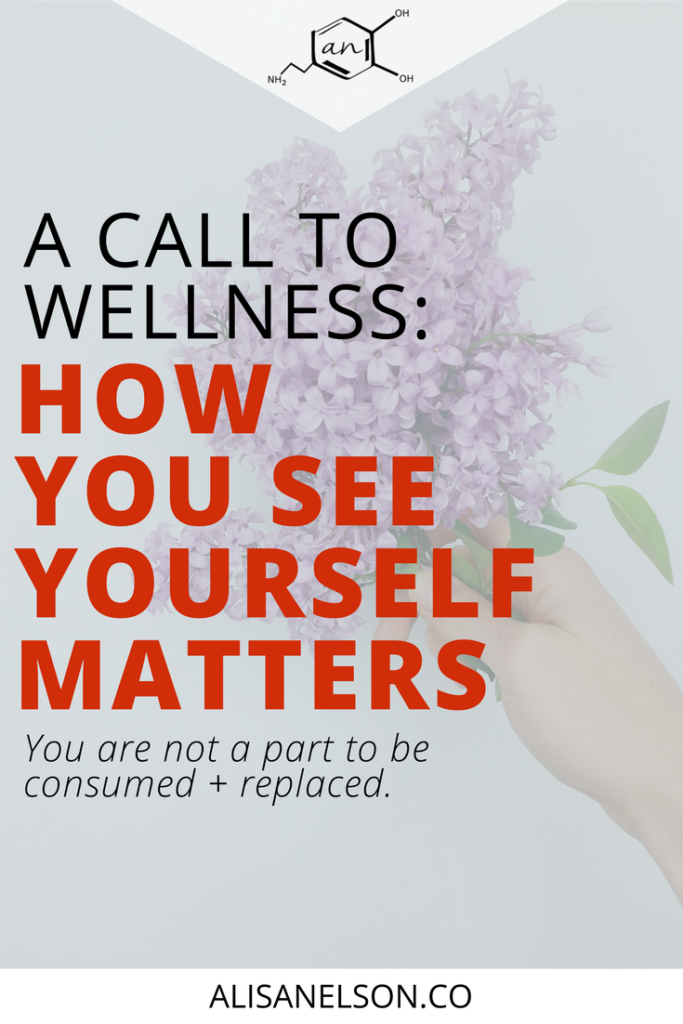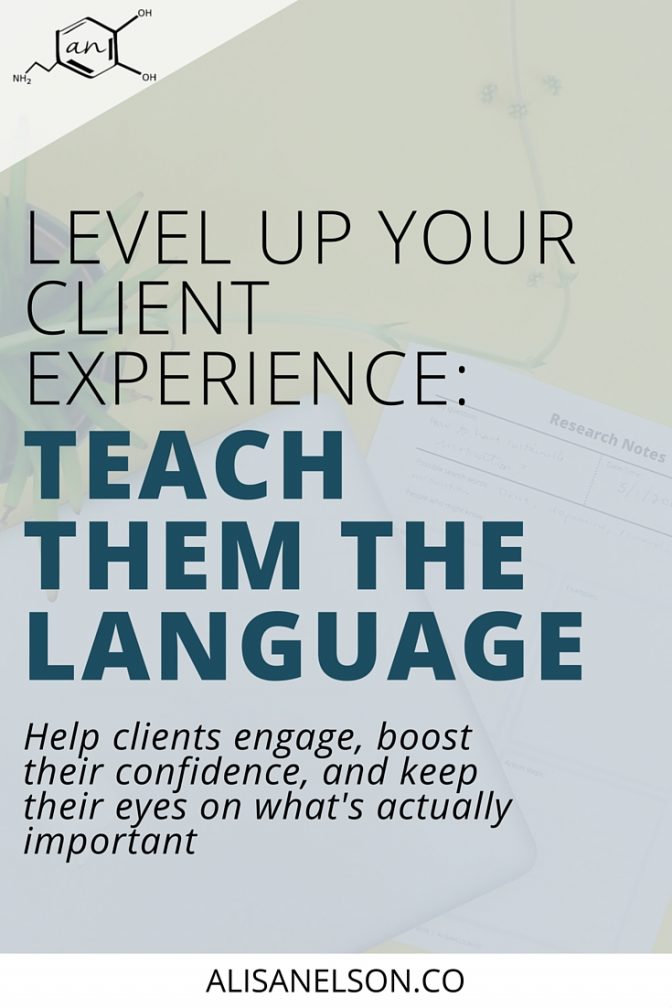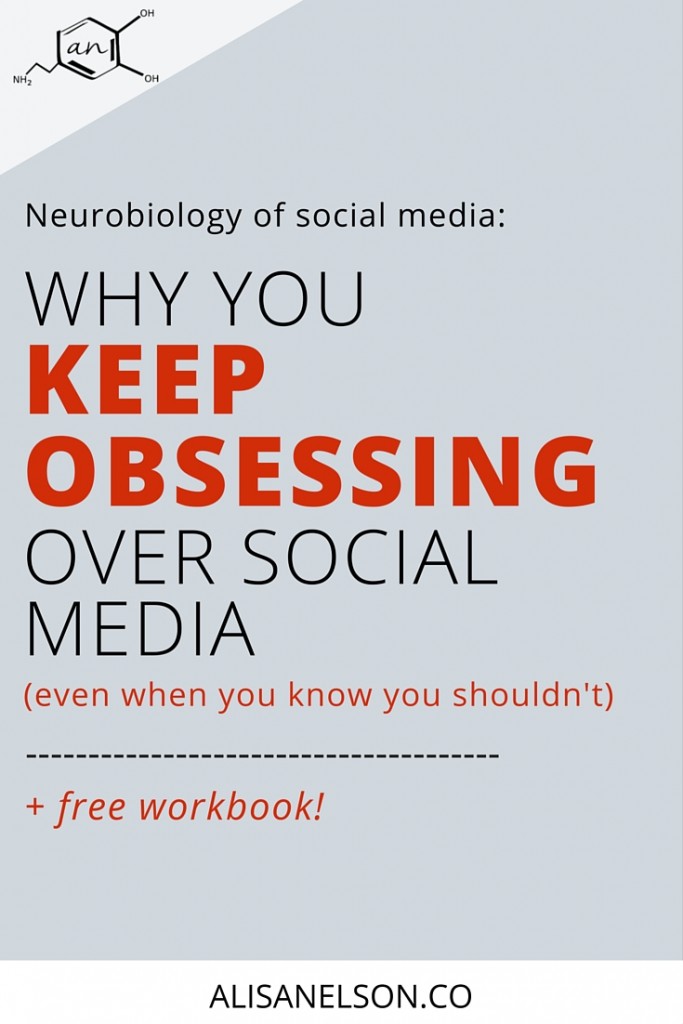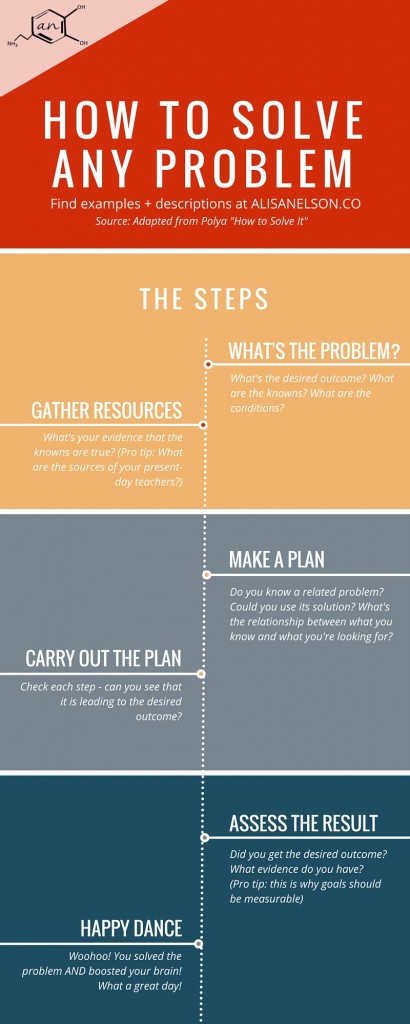What’s your client experience like? Are your clients engaged and prompt or are they getting stuck in unimportant details and slow in making decisions? Whether you realize it or not, understanding how your clients think – and how those thoughts translate into action – is important to your success and their client experience. Without it, you will wonder why so few follow through in a timely manner and why they don’t seem to value your work.
Today this post is going to help you help your clients learn. Specifically, we want to make sure your clients can be on the same page as you by teaching them how to interact in your domain – they need language and you’re going to give it to them.
When your client is ignorant of what the real, descriptive meaning of your words are, they will experience increased stress around working with you or within your domain in general. And stress is the last word you want describing your client experience. You have several opportunities throughout the client relationship to prime them for success by decreasing their own uncertainty and confusion.

Let’s quickly look at why you might want to decrease uncertainty. I’ve written about it a lot (like here) but a quick refresher, maybe?
Uncertainty is stressful for the brain. The brain is busy trying to determine if things are safe and when a shadow is cast over something, it assumes it is dangerous. With a rise in cortisol we get behaviors like procrastination, excessive questions, loss of focus on the important stuff, etc.
You don’t want that happening to a client. Whether you work 1-on-1 or they are a part of a group, it’s your job to help them succeed. They can’t do that if they are wandering around lost, stuck, or confused.
Back in the 80s there was some research done on skill acquisition that helps us form a strategy here. You might not have thought about it this way but you are trying to help your clients gain the “skill” of working within your domain. Learning the language of that domain is essential to engagement. Without knowing what words mean or how to use them, a person literally cannot participate. And since you have been in the field for a while, words that are difficult for your clients likely seem obvious to you.
In fact, it’s probably a source of frustration because why the heck do they keep asking for photos in dark, windowless churches when you clearly state that you are a natural light photographer??
Hint, hint: they probably don’t know what natural light really means.
And that’s ok! You’re the professional, right? It’s not their job to know, it’s your job to educate them on the important stuff.
So how do you do that?
First, go into every meeting with the assumption that your new client is a novice in your field.
Here are a few characteristics of a novice:
- No actual experience in the area they are expected to perform a task.
- Lack situational awareness (what’s important in this moment).
- Don’t know what they don’t know.
What they need from you:
- Context free learning – descriptive language.
- Patience for their unrelated or out-of-order questions (and desire to have those questions answered as if they are the most important concepts).
- Sequential uncovering of information to avoid overwhelm and help them see the big picture.
- Check-ins for understanding along the way.
Recommended sequence for uncovering information:
- Big picture – with constraints on the edges
- Big ideas
- How those big ideas interact
- Details.
The details are last because just like any problem, we need orientation to the big picture before we can make any sense of the details. Your client will just be overwhelmed if you jump into talking about which collateral items they want when they have no idea what that is or how it relates to their brand.
Without effective education, they will prolong the process because they don’t know how to make a decision or what’s going to be important. That wastes time for both of you.
“Ok, Alisa, I get it. A better client experience includes teaching my clients the language in a way that systematically reveals what is important at each stage of the process. So can we talk about how to do that now?”
So glad you asked! Answer: You need a good strategy that involves these big ideas:
-
Pair a word or idea with a visual (whether in story-form, picture, or video) is better for helping people understand words — words defining words is the worst (ex. What does methodology mean? “A set of methods.” That does not help me use the word effectively.)
-
Never give more information than they need at that moment (help your clients avoid overwhelm!) – be concise and descriptive.
-
Create space + safety for questions and provide prompts to stimulate the “oh yea, I don’t really know what that means” conversations.
What we want is for every step of your client process to leave your client feeling confident and excited about their newfound capability. We want them to experience that security of knowing they are communicating effectively with you and therefore the end product will in fact be what they’ve been hoping for.
Let me give you a quick example —
My son is 20 months and learning words like crazy. Every time we label something important to him (from an animal at the zoo to the snack he is enjoying) he lights up. And he starts to use it to ask for what he wants or to further enjoy his play. When he is struggling to ask for something and I manage to guess – and tell him the word – he starts giggling with joy. Oh the joy of being understood and getting what you want.
Do you see the value of increasing someone’s understanding? When you help people learn new things you give them new tools to use to express themselves + their needs, and to operate even just a little bit more comfortably within a new space.
[Side Note: In our instant-gratification world, you might see people reject your attempts to educate them in the domain language. Sometimes it’s because they are already fully saturated and unable to take in new information (but still need a job done) and other times it’s the unfortunate reality of not cultivating curiosity. Be sure to check for understanding along the way so they don’t end up frustrated by the end result, even if they aren’t opting in to your attempts at education.]
So how do you introduce your domain language without slowing down the onboarding or work process?
This is an important consideration because while people love to learn new things, they can also be very one-track minded. They are coming to you looking for a specific outcome and they want to jump right in.
But you know better. You can see the big picture here because you’ve been through it over and over again. You know exactly what a client needs to know in order to make your relationship run smoothly all the way through.
So your job is to fish through your memory or your notes and identify the ESSENTIAL understandings your clients need.
Then, you need to categorize them into where they fall in the timeline.
- What do they need to know before they sign up to work with you?
- What do they need to know right after they sign up?
- What is important halfway through the process?
- What is important just before closure?
- What do they need to be successful after your relationship is complete?
Make these essentials available in a user-friendly manner
These days – where information overload is a constant – everybody goes a little crazy over “actionable” information. But you, as the professional developing into a real expert, have the job of ensuring the essential pieces of the puzzle are not lost. For example, your client will want to just jump in a pick a color scheme (or maybe they already have one in mind) but it’s your job to make sure they know what colors communicate before they make a final decision. Your client process needs to make time for helping them make informed decisions.
Now for ideas on the user-friendly way to educate your clients:
A product / services page that provides real information.
Sell-able copy is important, but even more important is that your potential client gets a real sense of what it’s like to work with you, if you will be a good fit, and what the process looks like.
Use concise yet descriptive language telling visitors who you are, your mission, what the product includes, and who fits best for the product. If you can, pair your description with a video or a set of images that complements your words. At-a-glance understanding and a real sense of what the client will experience should be your goal.
Remember: We don’t want is to bog down potential clients with too much information – giving important information too soon makes it unimportant and decreases the likelihood that your would-be-next-client will follow through and sign up. We do, however, want to thoughtfully eliminate any barriers that might lead them to move on to the next website (assuming they are an ideal client).
Give them a lay of the land in the welcome email
It can be tempting to jump right in to the onboarding details but a new client needs to know that the questions they have will be covered – and when. Map out the journey including a timeline and major landmarks. If you know what clients are usually thinking about when they first sign up, give them assurance that you will get there. Use descriptive language so they can feel confident they understand what is expected of them (and what they can expect from you).
Include “glossary”-type page
Short, description definitions that your client can find all in one place has a couple of good effects. The first is you have a place to refer to. When you give your client an action step, you can remind them that if they need, they can refer to the glossary in their packet (or attached in an email).
The second effect is it will keep your client from googling. Perhaps you normally tell your client to email you with any questions but many people don’t like to ask for help – especially when they think they should know the answer. Instead they will likely try to figure it out themselves and you never really know what sources they will end up finding.
Create a blog series about your client process + how you work.
Here we’re going for posts that include screenshots, video, and / or images that give the client a mental image of the process that will include some working definitions of the language you will use.
By putting these types of posts into your archive you give a potential client a place to go if they are interested in reading more about how your design process works (like this one by Elle & Co) or how to streamline content creation (like this awesome post by Maya Elious!).
Links to essential blog posts
Think of this as your “index” if you were writing a book. Link your client to that blog post series you’ve created and be sure to categorize them so they can go directly to what they need in the moment. Use your experience – what questions do you frequently answer? Where do you see clients getting stuck in unimportant details?
Make a set of introductory videos, screencasts, or well-crafted visuals to be dripped out to your client at the appropriate time.
What’s your client onboarding like? From the couple of years I ran a personal training business out of my home I know there can be questionnaires, scheduling, setting communication expectations, setting up client profiles on a member portal, ensuring they know what steps to take + when, etc. It can be a whirlwind of chaos. And it can make or break their experience.
A welcome packet with step-by-step instructions is all well and fine. Your new + excited client might read every word when they first receive it. But reading every word might leave them overwhelmed – even if they don’t realize it. Meanwhile, videos that are delivered when needed will set your client up for success – they will avoid overwhelm and be more likely to retain the information.
Be approachable
People don’t like asking what might be a stupid question. By checking in with them you set the standard that understanding is more important than fast communication. Including statements like: “If any words I’m using are confusing feel free to interrupt me or shoot me an email if you have questions later” regularly tells your clients that you expect they will need some clarity AND tunes them to look for words they don’t understand.
If they don’t ask questions but appear to be lagging on their response or lacking follow-through, don’t assume they understand. Instead ask directly – “I’m noticing that you are struggling to follow through. Is there anything I can clarify? Where do you find yourself getting stuck?” They may have an alternative explanation but better to be corrected than to proceed when your client is lost, stuck, or confused.
Take action:
-
Define your big picture → what MUST prospective clients know about you and your services in order to confidently hire you? Polling previous clients might help you with this one.
-
Define your big ideas → once you’re hired, what are the major steps that are taken? How can you effectively inform your client of those steps? Imagine you are showing them a lay of the land before you head off on your adventure. Point out the landmarks.
-
Define how the big ideas interact → how does step 3 rely on a successful step 2? These interactions need to be understood so your client knows the most important decisions to make.
-
Fill in the details → as you approach landmarks, what details do they need to know / understand to ensure they will accomplish the next task?
-
From the list above – or your own creative ideas – plan out how you will inform your client from pre-hiring to saying goodbye.
Whether it’s simplifying your sales page, scripting + recording video, or putting together a “guided tour” through images / icons, break it into actionable steps, schedule it, and take action. Trust me, it is worth your time to ensure every client has clarity and confidence while working with you – you’re building trust + loyalty.
So tell me, what’s worked for you? What actions have you found to uplevel your client experience?









